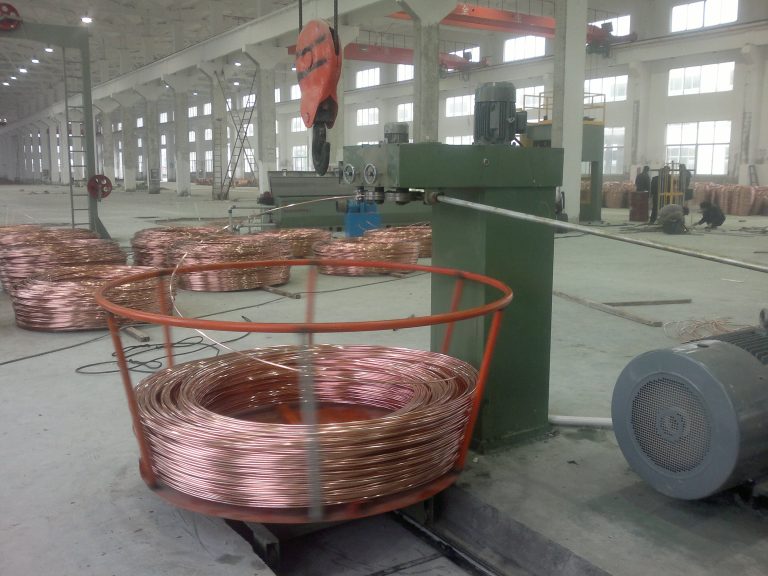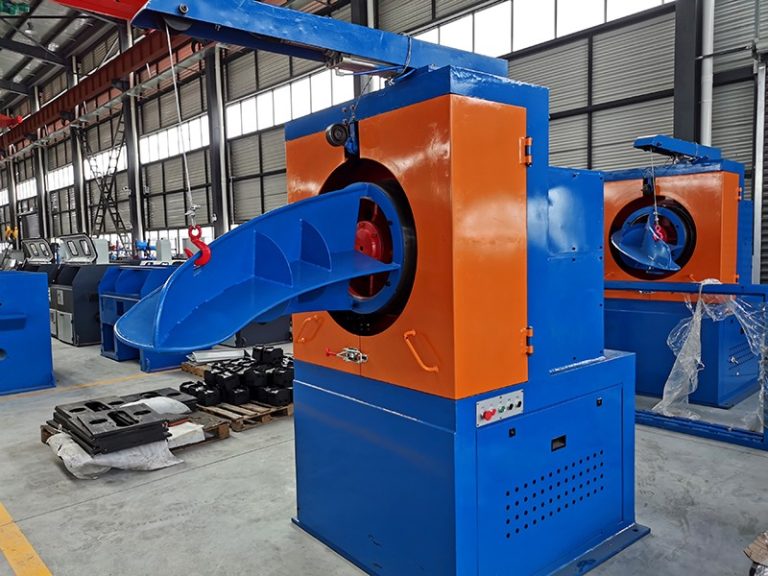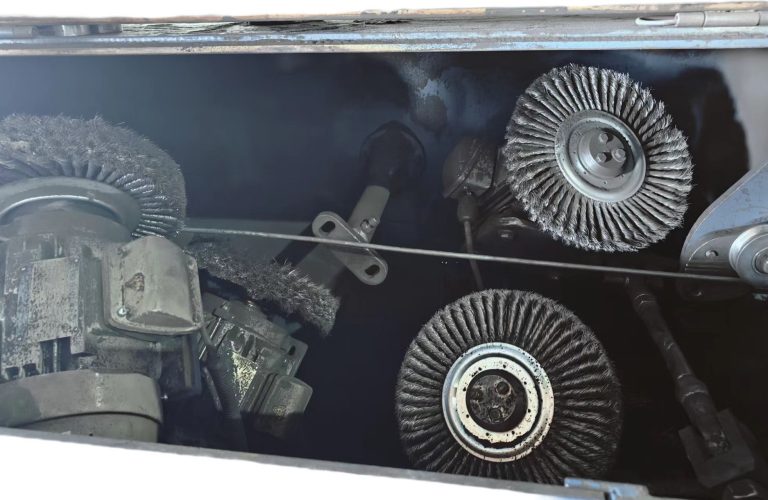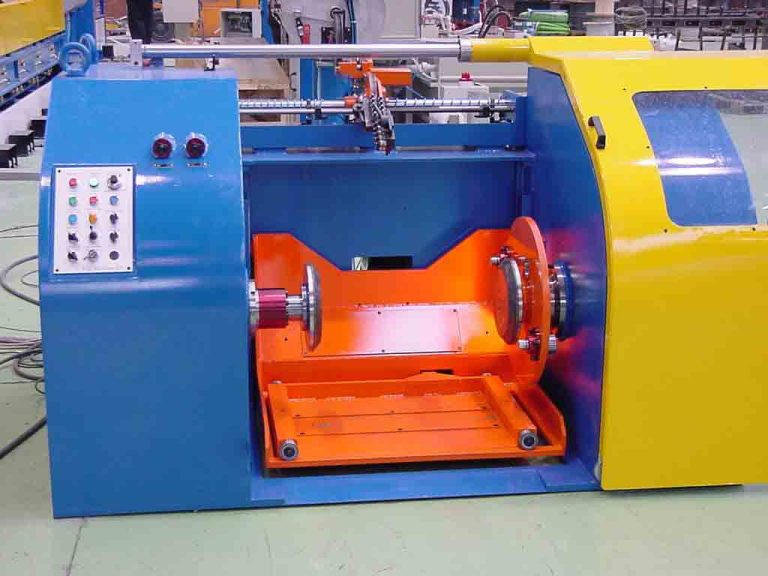Table of Contents
Key Components and Functions of a Wire Drawing Machine
Wire drawing machines are essential tools in the manufacturing industry, particularly in the production of wires and cables. These machines are designed to reduce the diameter of a wire by pulling it through a series of dies, resulting in a smoother and more uniform surface. In this article, we will explore the key components and functions of a wire drawing machine.
One of the main components of a wire drawing machine is the drawing die. Drawing dies are typically made of tungsten carbide or diamond and are used to reduce the diameter of the wire as it passes through them. The die is mounted in a die holder, which is attached to the machine’s frame. The die holder can be adjusted to control the size of the wire being produced.
Another important component of a wire drawing machine is the capstan. The capstan is a rotating drum that pulls the wire through the drawing dies. The speed of the capstan can be adjusted to control the rate at which the wire is drawn. The capstan is typically driven by a motor, which provides the necessary power to pull the wire through the dies.

In addition to the drawing dies and capstan, wire drawing machines also have a spooling mechanism. The spooling mechanism is used to wind the drawn wire onto a spool for storage or further processing. The spooling mechanism can be manual or automatic, depending on the design of the machine.
One of the key functions of a wire drawing machine is to reduce the diameter of the wire. This is achieved by pulling the wire through a series of drawing dies, each of which is slightly smaller than the previous one. As the wire passes through the dies, it is stretched and elongated, resulting in a thinner diameter. This process is repeated multiple times until the desired diameter is achieved.
Another function of a wire drawing machine is to improve the surface finish of the wire. As the wire is drawn through the dies, any imperfections or irregularities on the surface are smoothed out, resulting in a more uniform and consistent finish. This is important for applications where the wire will be used in precision instruments or electronic devices.
Wire drawing machines are also used to increase the tensile strength of the wire. By stretching and elongating the wire during the drawing process, the molecular structure of the wire is rearranged, resulting in a stronger and more durable material. This is particularly important for applications where the wire will be subjected to high levels of stress or tension.
In conclusion, wire drawing machines play a crucial role in the manufacturing industry by producing wires and cables with precise dimensions, smooth surfaces, and high tensile strength. By understanding the key components and functions of these machines, manufacturers can ensure that they are producing high-quality products that meet the needs of their customers.
Advantages of Using Wire Drawing Machines in Industrial Applications
Wire drawing machines play a crucial role in various industrial applications, providing a cost-effective and efficient way to produce wire of different diameters and materials. These machines are used to reduce the diameter of wire by pulling it through a series of dies, resulting in a smoother surface finish and improved mechanical properties. In this article, we will explore the functions of wire drawing machines and the advantages they offer in industrial settings.
One of the primary functions of a wire drawing machine is to reduce the diameter of wire to a desired size. This process involves pulling the wire through a series of dies, each with a slightly smaller diameter than the previous one. As the wire passes through the dies, it is elongated and its diameter is reduced, resulting in a thinner and more uniform wire. This process can be repeated multiple times to achieve the desired diameter, making wire drawing machines highly versatile and adaptable to different production requirements.
In addition to reducing the diameter of wire, wire drawing machines also play a crucial role in improving the surface finish of the wire. As the wire is pulled through the dies, any imperfections or irregularities on the surface of the wire are smoothed out, resulting in a cleaner and more uniform finish. This is particularly important in applications where the wire will be used for precision components or products that require a high level of surface quality.
Another important function of wire drawing machines is to improve the mechanical properties of the wire. By reducing the diameter of the wire and elongating it through the drawing process, the wire becomes stronger and more ductile. This makes it suitable for a wide range of applications where strength and flexibility are important, such as in the production of springs, cables, and electrical wiring.
One of the key advantages of using wire drawing machines in industrial applications is their ability to produce wire of consistent quality and dimensions. Unlike traditional methods of wire production, which can be time-consuming and labor-intensive, wire drawing machines offer a fast and efficient way to produce wire with precise dimensions and properties. This not only helps to improve the overall quality of the finished product but also reduces waste and production costs.
Furthermore, wire drawing machines are highly versatile and can be used to produce wire from a wide range of materials, including steel, copper, aluminum, and other alloys. This makes them suitable for a variety of industrial applications, from automotive and aerospace to construction and electronics. Whether it’s producing fine wire for jewelry making or heavy-duty wire for industrial machinery, wire drawing machines can be customized to meet the specific requirements of each application.
In conclusion, wire drawing machines play a crucial role in various industrial applications by providing a cost-effective and efficient way to produce wire of different diameters and materials. Their ability to reduce the diameter of wire, improve surface finish, and enhance mechanical properties makes them an essential tool for manufacturers looking to produce high-quality wire products. With their versatility and adaptability, wire drawing machines offer a reliable solution for a wide range of industrial applications, making them a valuable asset for any production facility.
Maintenance Tips to Ensure Optimal Performance of Wire Drawing Machines
Wire drawing machines are essential tools in the manufacturing industry, used to reduce the diameter of wire by pulling it through a series of dies. These machines play a crucial role in producing wires of various sizes and shapes, which are used in a wide range of applications, from electrical wiring to construction materials. Understanding the functions of wire drawing machines is essential for ensuring their optimal performance and longevity.
One of the primary functions of a wire drawing machine is to reduce the diameter of wire by pulling it through a series of dies. The dies are typically made of hard materials such as tungsten carbide or diamond, which are able to withstand the high pressures and temperatures generated during the drawing process. As the wire is pulled through the dies, it is elongated and its diameter is reduced, resulting in a thinner and stronger wire.
In addition to reducing the diameter of wire, wire drawing machines also help to improve the surface finish of the wire. The drawing process helps to remove any surface imperfections or defects, resulting in a smoother and more uniform surface. This is important for ensuring the quality and performance of the wire in its intended application.
Another important function of wire drawing machines is to control the mechanical properties of the wire. By adjusting the speed and tension of the drawing process, manufacturers can tailor the mechanical properties of the wire to meet specific requirements. This includes controlling the tensile strength, ductility, and hardness of the wire, ensuring that it is suitable for its intended use.
Wire drawing machines also play a crucial role in controlling the dimensional accuracy of the wire. By carefully monitoring the drawing process and adjusting the dies as needed, manufacturers can ensure that the wire meets precise dimensional specifications. This is essential for ensuring that the wire can be used in applications where tight tolerances are required.
To ensure the optimal performance of wire drawing machines, regular maintenance is essential. This includes cleaning and lubricating the machine, inspecting and replacing worn parts, and monitoring the drawing process for any signs of wear or damage. By following these maintenance tips, manufacturers can prolong the life of their wire drawing machines and ensure that they continue to produce high-quality wire.
Regular cleaning of the wire drawing machine is essential for preventing the buildup of dirt, debris, and other contaminants that can affect the performance of the machine. This includes cleaning the dies, rollers, and other components of the machine to ensure that they are free from any obstructions. In addition, lubricating the machine regularly can help to reduce friction and wear, prolonging the life of the machine and ensuring smooth operation.
Inspecting and replacing worn parts is also important for maintaining the optimal performance of wire drawing machines. Over time, the dies, rollers, and other components of the machine can wear out and become damaged, affecting the quality of the wire produced. By regularly inspecting these parts and replacing them as needed, manufacturers can ensure that their wire drawing machines continue to operate efficiently and produce high-quality wire.
Monitoring the drawing process for any signs of wear or damage is essential for identifying and addressing any issues before they escalate. This includes monitoring the speed, tension, and temperature of the drawing process, as well as inspecting the wire for any defects or imperfections. By staying vigilant and addressing any issues promptly, manufacturers can prevent costly downtime and ensure that their wire drawing machines continue to operate at peak performance.
In conclusion, wire drawing machines play a crucial role in the manufacturing industry, helping to produce wires of various sizes and shapes for a wide range of applications. Understanding the functions of wire drawing machines is essential for ensuring their optimal performance and longevity. By following these maintenance tips, manufacturers can prolong the life of their wire drawing machines and ensure that they continue to produce high-quality wire.






